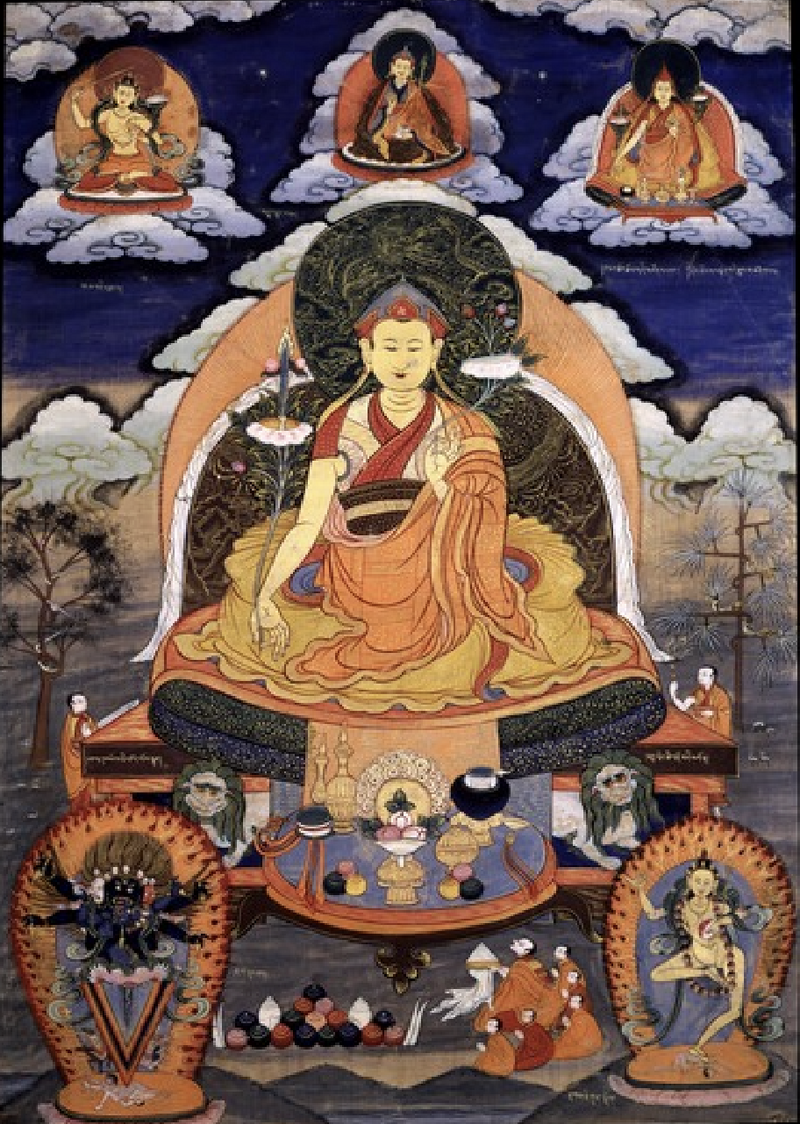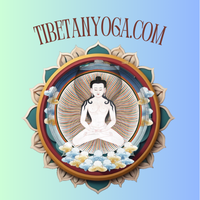
This post builds on my previous post about the challenges most of us practitioners face in trying both to recognize the nature state and build stability in that recognition or abiding. This is for those of us who find ourselves caught in “conventional” reality and conventional responses to it: grasping, aversion, pride, jealousy, and all kinds of other forms of contraction from our expansive and real natures.
So, here we all are in samsara! Caught between our likes and dislikes and endlessly ruminating on what we think and feel - the story of me - what is one to do? In such a state we clearly don’t abide at the peak of the way of realization, abiding in the nature of mind 24/7, what can we do? Fortunately, Lonchenpa, that extraordinary 14th c. practitioner quoted extensively in the last blog, lays out a path. This path does not directly reveal the natural state, that isn’t possible. But it is a path that, when diligently followed, prepares us to recognize and rest in the natural state. Following the stages as laid out by those who have gone before us, we can assess the quality of our awareness and determine what to do to develop ourselves.
The amazing yogi/saint/enlightened being Shardze Rinpoche (see image below) said: the goal of the path is to separate the “brightness of awakened awareness from the dregs of the mind.” The dregs of the mind! What a great way to articulate our usual relationships to life. The dregs are those little grounds at the bottom of your coffee cup. It’s that dense, bitter bit that are’t wanted. It’s the leftover residue.

Feelings, memories, fantasies, passions and aversions come and go every moment of every day. They arise without our control or consent. And much of what we think is useless and repetitious: “What should I have for dinner?” ”Who liked my last social media post?” “When will (name whoever you want) see and acknowledge me?” Feelings are often no different. Much of what we feel is reactive, not responsive, which means the feelings are real but not necessarily true (any emotion you feel is a real emotion, but the fact of it arising does not make it true, or a statement about reality per se). At this stage we are like a ship adrift at sea. We are buffeted about and dragged along by the currents of our mental life, with no way to navigate. Until we can learn to see the ways in which we have become slaves to our thoughts we can’t hope or expect anything to change. We have no power.
If we are new to practice, the first step is to recognize this wild and untamed nature of worldly mind. This simple recognition changes us and our relationship to thoughts and feelings. “Wow, that old thought again?!” Or, “Huh! Every time something like this happens, I feel the same way. Interesting!” Seeing the condition of our mind, we realize how exhausted we are by it.
At this first stage we work to tame ourselves. We practice concentration, meditate on impermanence, reflect on and express regret for our shortcomings and faults. This mind training is not that hard to do: it just takes some effort and persistence. The changes come. In fact, it is very much like training a puppy. At first, learning “sit” and “stay” are really hard for the little dog. But slowly, slowly, working together, s/he learns the commands, and afterwards you and the puppy are both happier for it. We commit to change and transformation because we see that we are creating needless suffering in our life and the lives of those around us. This brings enough stability to begin to do something about our minds. We may not quite have a sail and a rudder for our ship, but at least we know we are lost and may even have some idea of what sea we are adrift in.
After the mind can sit and stay for a bit, we work on higher order skills. In puppy-speak this is like “place,” or “settle.” Sit and stay are active commands - they take effort. When I sit, I am waiting for the opportunity to get up. When I stay, I am waiting for a chance to get up. But with skills like settle and place we just stop making the effort. We bring patience into our practice and relax into each moment as it is. In the same way, the heartmind naturally settles down effortlessly and brightens. We enter a better relationship with our mind and everyone is happier for it. Like our hands and eyes, the mind becomes a pliable tool to be used as needed. We find more choice in our actions and words and in our feelings. And this ability to choose leads to real happiness, to peacefulness.
Then we “perfect” ourselves. Perfecting can take many forms, from recitation of mantra, practicing generosity, to visualization practices that allow us to identify with divine expressions of being and buddhas. These practices start to transform us at the root of our being. They dissolve the hard boundaries of the self or ego that keep us feeling separate from the world and from others. They diminish our sense of self-importance.
During the taming and perfecting stages of our practice, once we have some stability and presence of mind, we are in an excellent place for Tsa Lung Trul Khor. Tsa lung Trul Khor balances our inner winds or dynamic energy. It powerfully works to integrate all aspects of our being, so that our practice can truly flousigh. And, perhaps most importantly, the way that Tibetan yoga yokes the body, breath and mind and then forcefully releases our grip on all three with the exhalation of the breath creates aporias in our experience and can bring us to touch the natural state directly.
If we do not have at least some stability of mind and energy, then Tibetan yoga isn’t necessarily a good tool for us. Tibetan yoga powerfully stirs things up so that they can clear. But if our heart or our mind is going to grasp at things as they are stirred up, then we can actually get even more caught in the delusions of our ego and our ignorance. The Nine Breaths of Purification are appropriate no matter where we are, even if we don’t yet have a practice. It’s this universal applicability of the Nine Breaths that led me to create the free course. As always, if you haven’t already learned how to clear the challenging things that come up in our experience with this simple practice. Just visit my homepage and click any button to join. As soon as you do, you will get access to the free course. Everything else that I offer builds on this simple, so profound practice.
This is a long blog, and I’d love to say more about the role of Tibetan Yoga as a practice. But my goal here is only to point out the path that can prepare us to experience what is always right here with us, but also always just beyond our ability to grasp.

Comments